Giochi dell'Oca e di percorso
(by Luigi Ciompi & Adrian Seville)
(by Luigi Ciompi & Adrian Seville)

|
Giochi dell'Oca e di percorso
(by Luigi Ciompi & Adrian Seville) |

|
 |

Torna alla ricerca giochi (back to game search) |
 |
| Nouveau (Le) Jeu des Ballons Aereostatique | ||
| à l'Usage des Esprits Elevés | ||
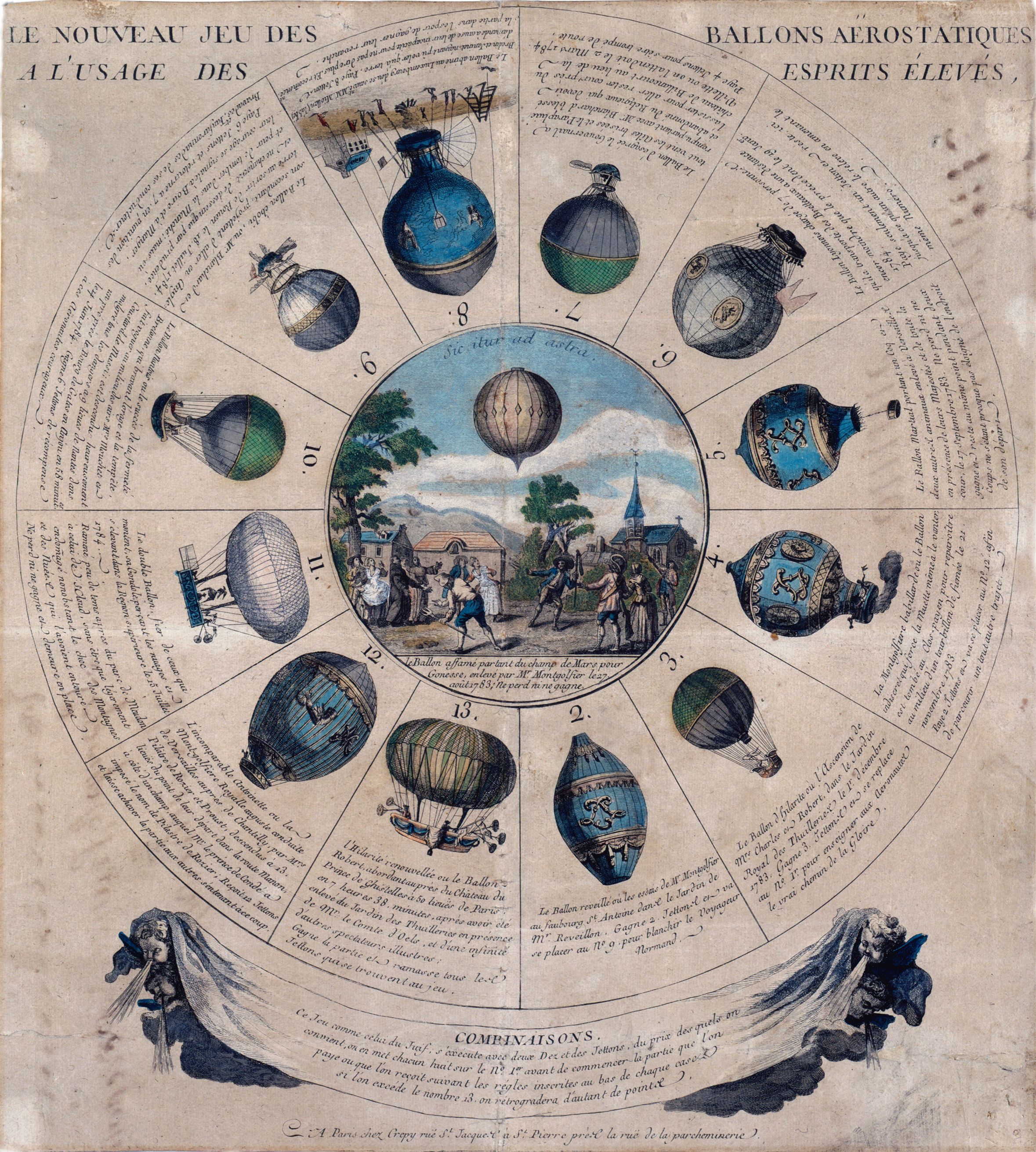 |
Versione stampabile
 |
Invia una segnalazione

|
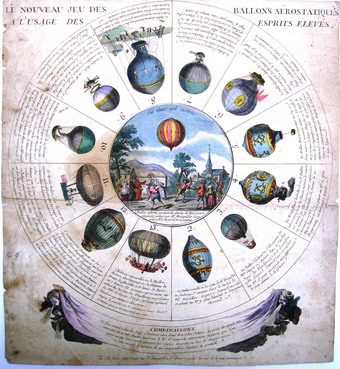 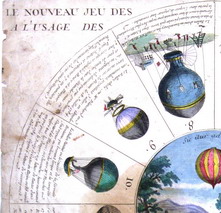 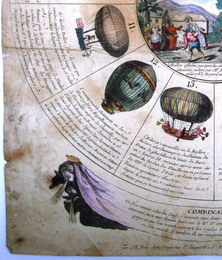 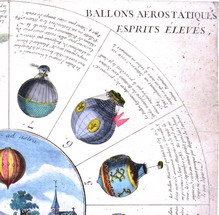 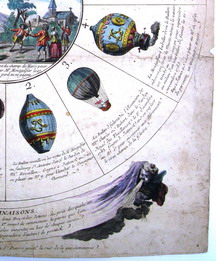 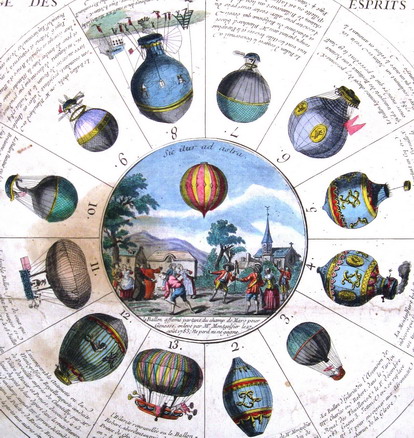 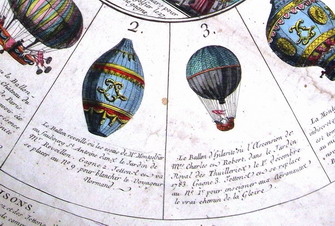 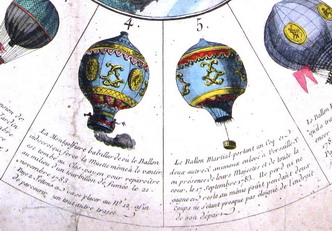 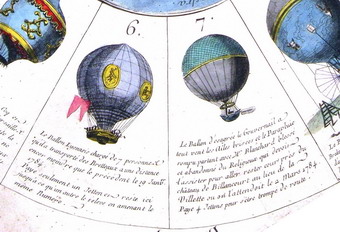 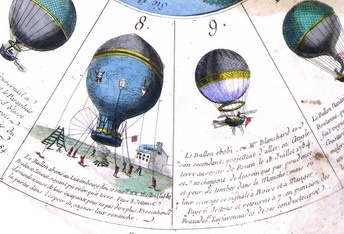 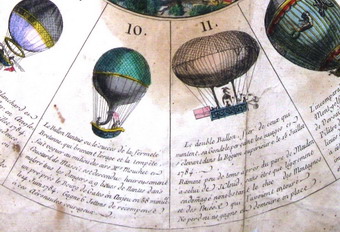 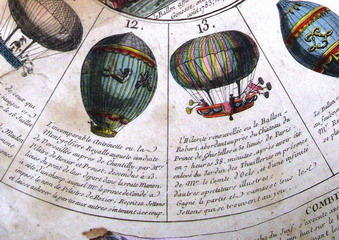 |
primo autore: | Anonimo |
| secondo autore: | Crepy | |
| anno: | 1784 | |
| luogo: |
Francia-Parigi |
|
| periodo: | XVIII secolo (4°/4) | |
| percorso: | Percorso di 13 caselle numerate | |
| materiale: | carta (paper) (papier) | |
| dimensioni: | 470X420 | |
| stampa: | Acquaforte (taille-douce) (ecthing) | |
| luogo acquisto: | ||
| data acquisto: | ||
| dimensioni confezione: | ||
| numero caselle: | 13 | |
| categoria: | Marina e Aviazione | |
| tipo di gioco: | Gioco con i dadi | |
| editore: | A Paris Chez Crepy, rue S.t Jacques à Saint Pierre près de la rue de la Parcheminerie | |
| stampatore: | A Paris Chez Crepy, rue S.t Jacques à Saint Pierre près de la rue de la Parcheminerie | |
| proprietario: | Collezione E. C. - A. Seville | |
| autore delle foto: | E. C. - A. Seville | |
| numero di catalogo: | 1277 | |
| descrizione: |
Gioco di 13 caselle numerate, circolare, antiorario. REGOLE: in basso. CASELLE: con didascalia. NOTA: Vedi anche gioco Arch. n°676 REFERENZA 1 (D'Allemagne, pag. 225): "Le nouveau jeu des ballons aérostatiques. A l'usage des esprits élévés. Paris Crepy (1784). Taille-douce 47x42. Jeu circulaire à treize cases, avec les fameux aérostats de l'époque. Au centre l'ascension de Montgolfier avec la légende: 'Sic itur ad astra'." REFERENZA 2 "Le Nouveau Jeu des Ballons Aérostatiques à l’Usage des Esprits Elevés" - "Neues Spiel der Heissluftballone fuer gehobene Geister." Paris, 1784 Kupferstich, handkoloriert, 47X44 cm Verlag: Chez Crépy rue St. Jacques à St. Pierre Das Feld in der Mitte verkuendet programmatisch: "Sic itur ad astra (So steigt man zu den Sternen auf). Der von Monsieur Montgolfier am 27. August 1783 gestartete Ballon affamé (Der freiheitsliebende Ballon) verlaesst das Pariser Marsfeld in Richtung Gonesse. Du verlierst nichts und gewinnst nichts". Unter allen Fahrzeugen, die auf den Spielplaenen dieses Buches in b Bewegung gesetzt werden - Flugzeuge, Fahrraeder, Raumschiffe, Eisenbahnen, Zeppeline -, ist der Ballon das eleganteste: Er schwebt lautlos, ist kaum lenkbar, den Winden ausgeliefert. Das Zentrum der Ballonfahrt war Paris. Fast zeitgleich experimentierten die Brueder Montgolfier und Jacques Charles mit Heissluft- bzw. gasgefuellten Ballons, Die ersten Flugversuche im Sommer 1783 erfolgten noch unbemannt, danach wurde mit Tieren experimentiert: Im September 1783 erhoben sich ein Schaf, eine Ente und ein Hahn ueber dem Schloss von Versailles in die Luefte (Feld 5). Im November folgte der erste Flug mit zwei (menschlichen] Passagieren. Das Spiel erzaehlt die Geschichte der fruehen Ballonfahrer. Ihre Fahrten waren technische Sensationen, der Start einer Charlière im August 1783 am Marsfeld etwa (siehe das zentrale Feld) zog rund 50.000 Schaulustige an, darunter Benjamin Franklin, der darueber einen detaillierten Bericht an die Royal Society sandte. Die Fahrten brachten allerdings keinen Nutzen, die Flugexperimente im Ancien Regime waren eher in der Sphaere der "kunstvollen Wissenschaft" angesiedelt. Es ging weniger um Erkenntnisgewinn und Wahrheit als um Spektakel und den courtoisen Umgang mit den "Wundern der Technik". Die Ballon-Euphorie erfasste rasch Theater und Mode, mit Ballon-Motiven wurden Stoffe und Lampen dekoriert. Ballonfahrten wurden Gegenstand unzaehliger Sensationsberichte und Erzaehlungen sowie von Karikaturen und Parodien. Frueh nutzen auch Spiele die Prominenz und Faszination des Ballons. Das Nouveau Jeu des Ballon; Aérostatiques thematisiert - durchaus schadenfreudig - die Fuelle der gescheiterten Versuche, der Misserfolge, Deviationen und Abstuerze der fruehen Ballonfahrer. Der spielerische Flug verlaeuft ueber eine sehr kurze Strecke. Das Spiel mit zwei Wuerfeln ueber nur 13 Felder wird in den Regeln dem Genre des Jeu du Juif (Spiel des Juden) zugeordnet. Die Bezeichnung wird in der zweiten Haelfte des 18, Jahrhunderts in Frankreich und England populaet, das Spiel aehnelt im Bewegungsablauf dem japanischen tobi sugoroku (siehe Spiel 9). Mit dem klassischen Gaensespiel weist das Jeu du Juif nur wenige Familienaehnlichkeiten auf. Das Nouvelle combinaison du jeu du juif aus dem Jahr 1783, auf welches die Spielregeln des Ballonspiels offenbar direkt verweisen, ist ein reines Hasard-oder Lotteriespiel. Wie beim aelteren sueddeutschen Wuerfelspiel Schluck, Hansel steht nicht die Laufbewegung der Spielfigur, sondern das Entrichten von Einsaetzen und das Gewinnen des Jackpots auf Feld 12 im Vordergrund. Die Bezeichnung selbst hat durchaus antisemitischen Charakter: Am zentralen Feld des 1807 in London erschienenen New Game of the Jew ist ein orientalischer Jude abgebildet, der Geldsaecke in den Haenden haelt. Gaensespiele mit Themen aus der juedischen Mythologie, wie das Jeu du Juif-Errant, sind hingegen erst in der zweiten Haelfte des 19. Jahrhunderts belegt. Durch die wenigen Felder konzentriert sich der Spielverlauf beim Le Nouveau Jeu des Ballons Aérostatiques auf das Hineinwuerfeln ins Ziel und ist vergleichbar mit einer Blitzpartie im Schach oder mit einer Meisterschaft im 1-Meter-Lauf. Spielregeln Dieses Spiel wird wie das Jeu du Juif (Spiel des Juden) mit zwei Wuerfeln und mehreren Spielmarken (Jetons) gespielt, ueber deren Wert man sich zuvor einigt. Jeder legt acht dieser Spielmarken auf Feld 1. Ausserdem vereinbart man, wie viel man beim Befolgen der Anweisungen auf dem jeweiligen Spielfeld erhaelt oder zahlen muss. Wuerfelt man ueber Feld 13 hinaus, muss man um die entsprechende Punktezahl zurueckziehen. Felder 2 Der Ballon reveillé (Der erwachte Ballon) oder die Versuche des Monsieur Montgolfier im Garten von M. Révillon in der Faubourg St. Antoine, Du gewinnst 2 Spielrnarken und ziehst auf Feld 9 vor, um den in der Normandie Reisenden erblassen zu lassen (Anm.: Gemeint ist Mr Blanchard, der von Rouen aus - es liegt in der Normandie - nach England fliegen wollte. Das Wortspiel erblassen lassen /blanche gehz natuerlich verloren), 3 Der Ballon d'ilarité (Der heitere Ballon) oder der Aufstieg der Messieurs Charles und Robert im koeniglichen Garten der Tuilerien am 1. Dezember 1783. Du gewinnst 3 Spielmarken und kehrst auf Feld 1 zurueck, um die Aeronauten den wahren Weg des Ruhms zu lehren. 4 Die Montegolfière babillarde oder der Ballon indiscret (Der geschwaetzige oder unvorsichtige Montgolfière), die selbst die Stumme (Anm.: Die Stumme ist das Schloss de la Muette) lobpreisen muss, stuerzte am 21. November 1783 im Park Clos-Payen des Schlosses de la Muette ab und tauchte dann inmitten von Rauchschwaden wieder auf. Zahle 2 Spielmarken und ruecke auf Feld 12 vor, um einen ganz anderen Weg zu nehmen. 5 Der Ballon Martial (Der kriegerische Ballon) stieg mir einem Hahn und zwei weiteren Tieren in Anwesenheit der koeniglichen Hoheiten und des gesamten Hofstaats am 17. September 1783 in Versailles auf. Du verlierst nichts und gewinnst nichts und setzt fuer 2 Runden aus, da sich der Ballon kaum von seinem Startplatz entfernt hat. 6 Der Ballon Lyonnais (Ballon aus Lyon) legte am 19. Januar 1784 mit sieben Personen von les Bretteaux aus eine noch geringere Distanz zurueck als der Ballon zuvor. Zahle nur 1 Spielmarke und bleib, wo du bist, bis du von einem anderen Mitspieler erloest wirst (Anm.: bis ein Spieler diese; Feld betritt) 7 Der nur mit dem Steuerruder navigierende Ballon - Ruderfluegel und Parasol zerbarsten bei vollem Wind - stieg am 2. Maerz 1784 mit Monsieur Blanchard empor. Dieser landete verletzt und von dem Moench verlassen, der ihm haette beistehen sollen, bei Schloss Billancourt anstatt bei der Villette, wo sie erwartet wurden. Zahle 4 Spielmarken, weil du dich verirrt hast. 8 Der im Jardin du Luxembourg zerstoerte Ballon, aus dem sich die Messieurs Bredin und Janinet und der Abt Miollan recten konnten, flog nur am Boden entlang. Zahle 8 Spielmarken als Strafe fuer ihre Unfaehigkeit, um es gelinde zu sagen. Beginne das Spiel von vorne in der Hoffnung, Revanche zu nehmen. 9 Der Ballon ébobi (Der verdutzte Ballon), in dem Monsieur Blanchard und sein Sekundant am 18. Juli 1784 von Rouen nach England fliegen wollten, Rein aus Vorsicht und Angst vor einem Absturz in den Aermelkanal gaben sie ihr Vorhaben auf. Eifer zeigten sie jedoch beim Essen und Trinken. Zahle 6 Spielmarken und gehe als Strafe fuer die Aufgeblasenheit und Prahlereien seiner Luftschiffer auf Feld 7 zurueck. 10 Der Ballon Nantais (Der Ballon von Nantes) oder der Erfolg bretonischer Entschlossenheit: Gewitter und Sturm trotzend, liess er die Messieurs Mouchet und Coustard de Massi durch die Luefte schweben. Trotz aller Gefahren landete er gluecklich am 14. Juni 1784 nach 58 Minuten neun Meilen von Nantes entfernt auf einer Wiese bei Bourg de Gates in Anjou. Du gewinnst 6 Spielsteine als Belohnung fuer diese beherzten Aeronauten. 11 Der Ballon double (Der Doppelballon) ist der Stolz derer, die ihn fahren; seine Gondel durchbrach die Wolken und entschwebte am 15. Juli 1784 in hoehere Gefilde. In kurzer Zeit gelangte er vom Park von Meudon zum Park von St. Cloud, wobei er kaum beschaedigt wurde und, ungeachtet der Huegel und Wolken um ihn herum, den Aufprall ueberstand. Du gewinnst nichts und verlierst nichts und bleibst an Ort und Stelle. 12 Die Unvergleichliche "Antoinelte" oder Erlauchte Montgolfière Royalle fuhr mit den Messieurs Pilatre de Rozier und Proust von Versailles bis nach Chantilly. Sie landete 13 Meilen von ihrem Ausgangspunkt entfernt auf der Route Manon neben einem Feld, dem der Prinz von Condé den Namen "Pilastre de Rozier" verlieh. Du erhaeltst 12 Spielmarken und scheidest aus, waehrend die anderen weiterspielen. 13 Die Hilarité renouvellée (Die neuerliche Heiterkeit) oder der Ballon Robert landete 50 Meilen von Paris entfernt beim Schloss des Prinzen von Ghistelles, 7 Stunden und 38 Minuten, nachdem er im Garten der Tuilerien in der Gegenwart von Graf Oels und einer grossen Schar illustrer Zuseher abgehoben hatte. Du gewinnst die Partie und erhaeltst alle im Spiel befindlichen Spielmarken. Literatur Adrian Seville: "La Nouvelle Combinaison du Jeu du Juif. Un intrigant jeu de dés imprimé du XVllIe siècle". ln: Le Vieux Papier (410/2013), http://www.giochidelloca.it/storia/VP_410.pdf (Zugriff: Juni 2015) (Ernst Strouhal) REFERENZA 3 Game 49: Aerostatic Balloons - Le Nouveau Jeu des Ballons Aërostatiques à l’Usage des Esprits Élevés. Paris: chez Crépy rue St Jacques à St Pierre pres de la rue de la parcheminerie, [1784]. Copper engraving with original hand color, 47 x 44 cm. Refs.: Ciompi/Seville 1277; D’Allemagne, pl. 41. The punning title of this finely engraved race game is ”New Aerostatic Balloon Game for the use of those with High Spirits.” Its circular track, numbered from 2 to 13, surrounds a circular image showing a balloon ascent on 27 August 1783. Instructions to pay to or take from the pool are found below each numbered space. The winning space is 13, with reverse overthrows as in Goose. This game is quite playable, though the short track and use of double dice mean that most of the action takes place around the final space. The game sheet gives a concise history of the earliest ballooning, which developed at a remarkable speed in France, both hot air (Montgolfier) and hydrogen (Charles) balloons being employed. The Montgolfier brothers, Joseph (1740 - 1810) and Etienne (1745–99), are credited with the invention of the hot air balloon, making their experiments at Avignon in November 1782. Professor Jacques Charles (1746 - 1823) was a famous scientist, much concerned with the physics of gases. The central space shows ”The balloon leaving the Champ-de-Mars [Paris] for Gonesse, released by M. Montgolfier on 27 August 1783.” The launch from the Champ de Mars was witnessed by Benjamin Franklin, who sent an immediate account to Sir Joseph Banks, president of the Royal Society in London: Passy, Aug. 30. 1783. SIR, On Wednesday the 27th Instant, the new aerostatic Experiment, invented by Messrs. Mongolfier of Annonay was repeated by Mr. Charles; Professor of Experimental Philosophy at Paris. A hollow Globe 12 feet diameter was formed of what is called in England Oiled Silk, here Taffetas gommée, the Silk being impregnated with a Solution of Gum-elastic in Lintseed Oil, as is said. The Parts were sewed together while wet with the Gum, and some of it was afterwards passed over the Seams, to render it as tight as possible. It was afterwards filled with the inflammable Air that is produced by pouring Oil of Vitriol upon Filings of Iron, when it was found to have a Tendency upwards so strong as to be capable of lifting a Weight of 39 Pounds, exclusive of its own weight which was 25 Ib, and the Weight of the Air contain'd. It was brought early in the Morning to the Champ de Mars, a Field in which Reviews are sometimes made, lying between the Military School and the River. There it was held down by a Cord, till 5 in the Afternoon, when it was to be let loose. Care was taken before the Hour to replace what Portion had been lost of the inflammable Air, or of its Force, by injecting more. It is supposed that not less than 50,000 People were assembled to see the Experiment.... At 5 o Clock Notice was given to the Spectators by the Firing of two Cannon, that the Cord was about to be cut. And presently the Globe was seen to rise, and that as fast as a Body of 12 feet diameter with a force only of 39 pounds, could be suppos'd to move the resisting Air out of its way. There was some Wind, but not very strong. A little Rain had wet it, so that it shone, and made an agreable Appearance. It diminish'd in Apparent Magnitude as it rose, till it enter'd the Clouds, when it seem'd to me scarce bigger than an Orange, and soon after became invisible, the Clouds concealing it. The Multitude separated, all well satisfied & much delighted with the Success of the Experiment, and amusing one another with Discourses of the various Uses it may possibly be apply'd to, among which many were very extravagant. But possibly it may pave the Way to some Discoveries in Natural Philosophy of which at present we have no Conception. A Note secur'd from the Weather had been affix'd to the Globe, signifying the Time & Place of its Departure, and praying those who might happen to find it, to send an Account of its State to certain Persons at Paris. No News was heard of it till the next Day, when Information was receiv'd, that it fell a little after 6 oClock at Gonesse, a Place about 4 Leagues distance; ... P. S. ... It is said the Country people who saw it fall were frightened, conceiv'd from its bounding a little when it touch'd the Ground, that there was some living Animal in it, and attack'd it with Stones and Knives, so that it was much mangled; but it is now brought to Town & will be repaired. Space 2: The Montgolfier balloon Réveillé, so named because its first inflation was in the garden of M. Révillon, a well-known paper merchant. For its flight, see space 4. Space 3: The ballon d’hilarité {the reason for this name is not clear) by Charles and the Robert brothers, flown from the Tuilleries on December 1, 1783. Space 4: The Montgolfier (as in space 2) launched on November 21, 1783 from the garden of la Muette [the dumb girl] - the caption says the balloon ”forced even the dumb to boast.” Space 5: The balloon Martial, which flew on September 17, 1783 from Versailles in the presence of the king and his whole court. It carried as passengers a cock, a sheep and a duck, animals chosen to test the dangers of flight. All landed safely at Vincennes. Space 6: A hot air balloon flew from Lyons on January 19, 1784 carrying seven persons, including Joseph Montgolfier. It flew as far as Bretteaux. Space 7: Blanchard’s unsuccessful attempts at a dirigible balloon, March 2, 1784. Space 8: An unhappy attempt by the Abbé Miolan; the balloon never left the ground. Space 9: The balloon ébobi in which Blanchard and Jefferies attempted to fly to England but landed near Calais for fear of falling in the Channel. Spaces 10, 11 and 12 show ascents by Mouchet, Blanchard and Pilâtre de Rozier. Pilâtre de Rozier (1754 - 85) was a teacher of chemistry and physics who has been credited with being the ”first human being that ascended into the air by means of an air-balloon.” With his companion, Pierre Romain, he died when his balloon crashed near Wimereux in an attempt to cross the English Channel,becoming the first fatalities of air travel. The winning space, number 13, shows the Ballon Robert arriving successfully after a flight of ”7 hours 38 minutes” (but actually 6 hours 40 minutes) from Paris to the chateau of the Prince de Ghistelles, at Beuvry, near Arras, ”a journey of 50 leagues” (about 186 km). The brothers experimented with an elongated elliptical shape for the hydrogen envelope in a balloon they attempted to power and steer by means of oars and umbrellas. Their flight from Paris to Beuvry was the world's first flight of more than 100 km. The reaction at Beuvry is described thus: On 19 September 1784, the Prince gave a great feast in his castle at Beuvry, including the spectacle of the flight of a hot air balloon 10 meters high. There was much talk then of experiments made in Paris by the brothers Robert. But the people of Beuvry were amazed when, by the side of the old windmill, they saw appear a balloon with a basket in which two men wielded oars to steer their ship. They were the Robert brothers, who had flown from the Tuilleries that day at noon. Such a feat was celebrated with dignity, and the festivities lasted eight days. (Adrian Seville) Exhibitions: - "The Royal Game of the Goose four hundred years of printed Board Games". Exhibition at the Grolier Club, February 23 - May 14, 2016 (Prof. Adrian Seville). |
|
| bibliografia: |
1) CREPY, Jean Baptiste: “Estampes pour servir à la Récréation de l'Esprit sous la forme du Jeu Royal de l'Oye Renouvelé des Grecs. Pour l'Education des Jeunes Gens de l'un & de l'autre Sexe”. Lesquelles se trouvent à Paris chez Crepy, Rue S.t Jacques à S.t Pierre près la Rue de de la Parcheminerie. A. P. D. R. Paris, 1780ca (contiene 26 giochi rilegati). 2) ALLEMAGNE, Henry-René D’: "Le noble jeu de l’oie en France, de 1640 à 1950", Ed. Grund, Parigi 1950. 3) STROUHAL, Ernst: "Die Welt im Spiel. Atlas der spielbaren Landkarten”. Christian Brandstaetter Verlag. Universitat fur Angewandte Kunst, Wien. 2015 4) SEVILLE, Adrian: "The Royal Game of the Goose four hundred years of printed Board Games". Catalogue of an Exhibition at the Grolier Club, February 23 - May 14, 2016. 5) VOON, Claire:"How the World’s Oldest Printed Board Game Rolled Propaganda into Play", 28 April 2016. 6) NEGRI, Ilio - VERCELLONI, Virgilio: "I giochi di dadi d'azzardo e di passatempo dei gentiluomini e dei pirati". Introduzione di Caterina Santoro, Lerici Milano 1958. |
|
Vai alla ricerca giochi Vai all'elenco autori